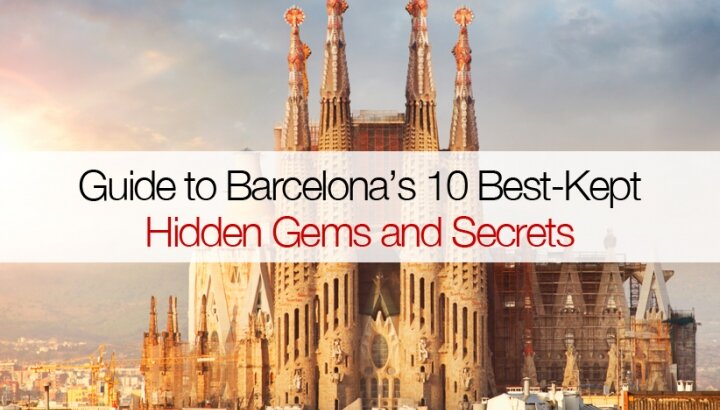
Every city has its secrets. And not forgetting those hidden gems off the typical tourist track that you only discover when exploring an area to the full and happen to stumble across them often by accident.
Barcelona has them by the truckload, but they are rarely visited on your average guided tour of the city where the most famous landmarks are usually the only ones to be mentioned.
Most of the time these spots are overlooked or passed by, which is a shame as they often hold some of the best-kept secrets of history, intrigue and magic.
Here is a guide to ten of these so-called hidden gems and secret locations in Barcelona that are definitely worth checking out if you’re in the city.
Remains of the Temple of Augusto
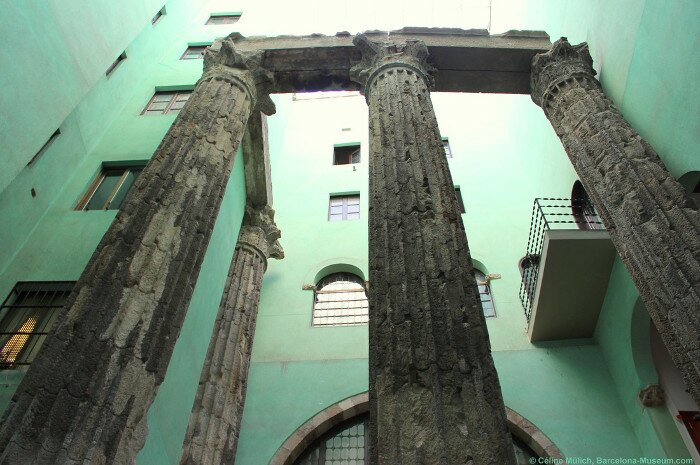
Strolling around the Gothic Quarter is always an experience with its narrow, windy cobbled alleyways and the intricate and stunning architecture found there. However, there is a little corner here that is truly awe-inspiring if you know where to look, and that’s the medieval patio located at 10, Calle Paradís. Inside this ancient patio you will find four columns that in even older times formed part of the Temple of Augusto. These columns are more than 2,000 years old and measure 9 metres high. If you happen to come across them, the sight is truly amazing. You will be immediately transported back to Roman times simply by entering a seemingly unremarkable little patio in a similarly nondescript street.
The Arús Library
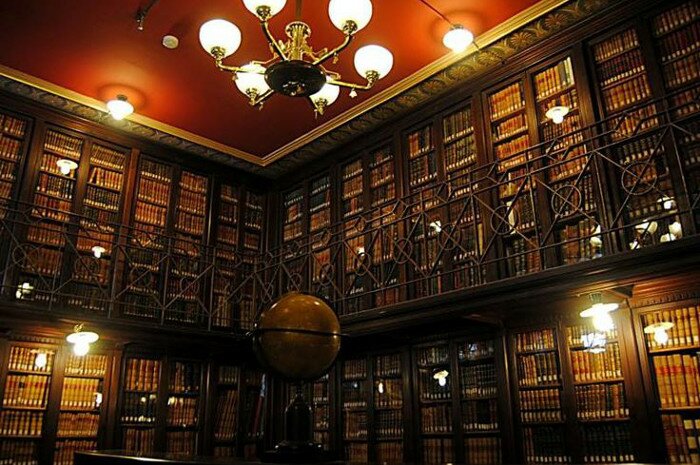
Borges once said that all mysteries are found within a library. And in this case he wasn’t wrong. The Arús Library, once of the most beautiful to be found in Barcelona, is home to one of the most famous monuments in the world – but on a smaller scale. The connection is New York. Located at 26, Paseo San Juan, you will find a diminutive replica from the 19th century of the Statue of Liberty gracing the entrance.
Museum of the History of the City of Barcelona
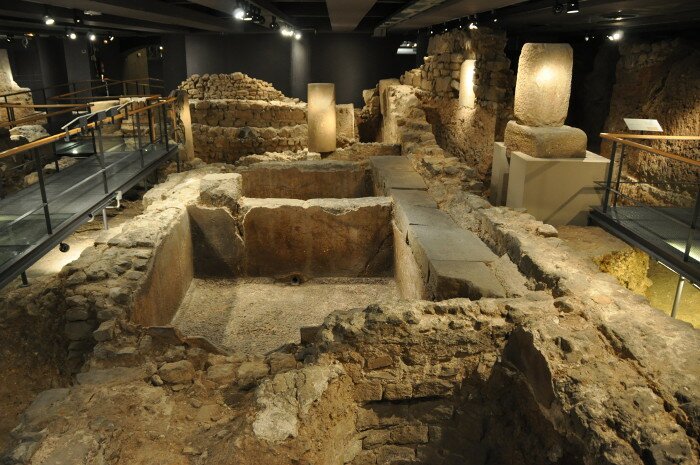
The main headquarters of the Museum of the History of the City of Barcelona is located in the Plaza del Rey square. Here you will discover all about the evolution of Spain’s second city over the centuries and through the various ages. The museum is located underneath the old town and contains Roman ruins that you are guided around and given the history of. You wouldn’t believe what’s right underneath your feet as after perusing the first couple of rooms, you are then led down even further underground where sights such as an old Roman wall, a fish-salting facility, a wine-making set-up and the actual foundations of the Se cathedral await you. It’s pretty jaw-dropping stuff and very easy to miss if you don’t know where to look.
The Chilling Air-Raid Shelters
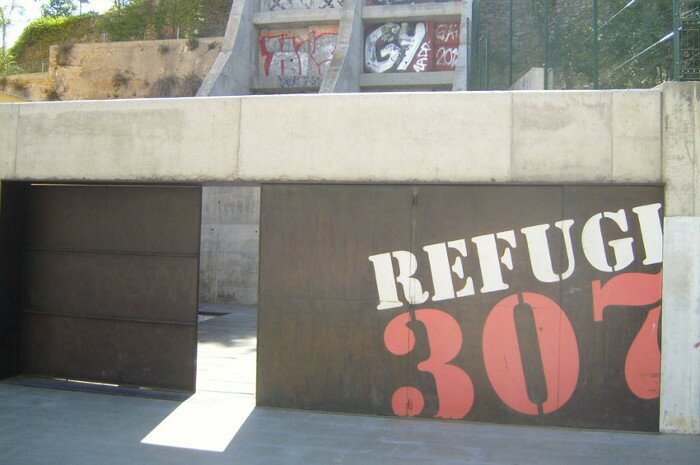
While Barcelona has a history that dates back thousands of years, it also has a very interesting recent one too, although some of the stories would probably make your hair stand on end. The Civil War began in 1936, and as the city suffered constant bombings, engineers were ordered to quickly build underground shelters to protect the people from these attacks. Today, some of these air-raid shelters are open to the public, which is the case of the one found below the Plaza del Diamante. It is some 13m underground, 250m long and can hold up to 200 people. To visit the shelter, you must make a reservation beforehand by calling 932 196 134.
Also worth a visit is the Refugio 307 shelter at 169, Calle Nou de la Rambla. This is made up of 400m of tunnels which are 1.6m wide and 2m high.
Silent Witnesses in the Sant Felip Neri Church

The Sant Felop Neri Square has become one of those places full of tranquillity, serenity and significant hidden silences. It’s a space to reflect right in the heart of the hustle and bustle of the Gothic Quarter. The reason being probably has something to do with the front of the church that dominates the square. Under attack during the Civil War and the bombings of 1938, a total of 42 people seeking refuge underneath the convent lost their lives. And when it came to rebuilding and restoring the church, it was decided to leave the holes caused by the explosives and shrapnel for everyone to see rather than cover them up, as some kind of testimony and manifestation of what had taken place there.
Traces of the Aqueducts of Barcelona
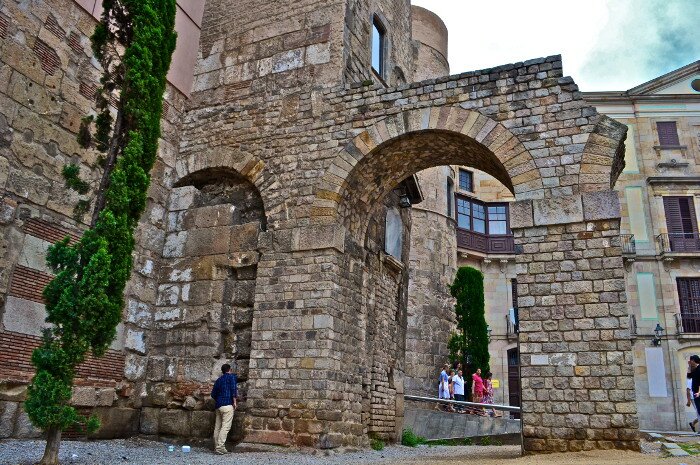
It is a well-known fact that Barcelona used to have two aqueducts that carried water into the city. One brought water from the Besós River, while the other one transported it from Collserola, but both ended up at the same place – the actual Placa Nova that is there today. Here, you can actually see a reconstruction of the old water passage, as well as two of the original defence towers, which are still standing and look over the square. Another remnant of the aqueduct can be found in Calle Duran y Bas, where four arches have been integrated into a dividing wall of a more modern structure.
Casa Vicens
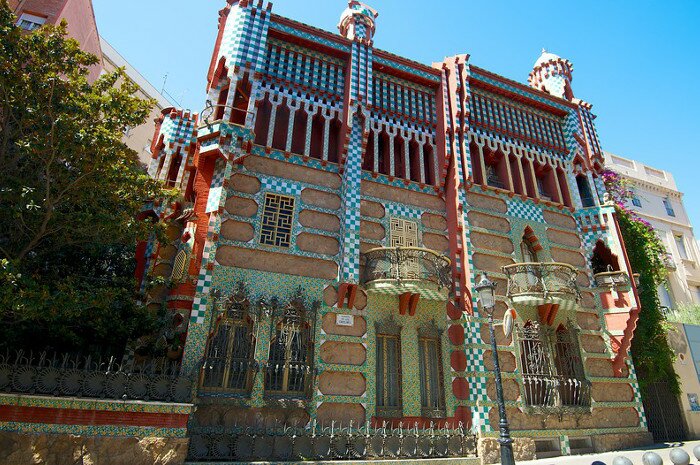
This is perhaps the most famous of the hidden gems within this guide, yet, despite being designed and constructed by the city’s most renowned and recognised architect, Antonio Gaudí, Casa Vicens is still overlooked by many. Tucked away at 24, Calle Carolinas in the Gràcia district, this is a stunning piece of architecture, with oriental and Moorish influences, that dates back to 1883. Even just contemplating the exterior of the building will transport you to another time and place.
La Font del Gat
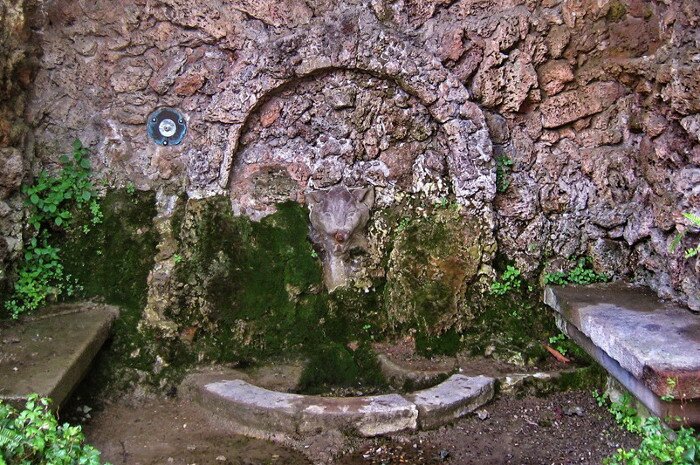
The Font del Gat, or the Cat’s Fountain in English, is one of the most popular fountains to be found in the city of Barcelona. It was sculpted in 1918 by Antoni Homs and is situated in one of the city’s most beautiful gardens – Los Jardines de Laribal in Calle Tapioles. In days gone by, it used to be a meeting place for a group of well-known gastronomes, who would get together to talk about and sample each other’s culinary delights. The fountain was given its name as the water flows through a hole that actually looks like a cat’s mouth.
The Santa Madrona Chapel
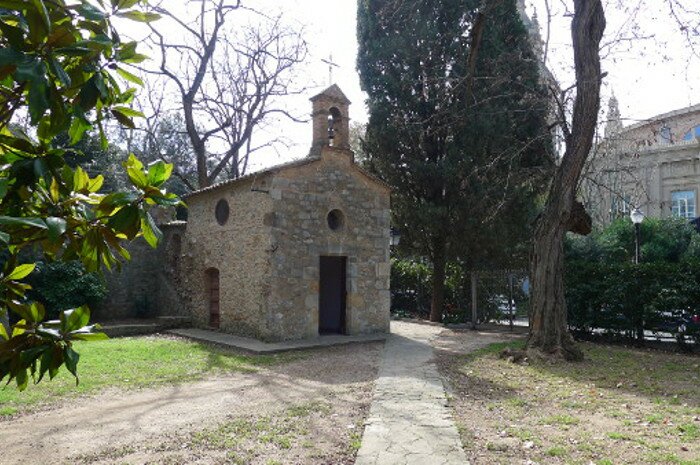
During the Middle Ages, the area of Montjuïc was abundant with convents, chapels and hermitages, however, out of a great number of them, the only one to survive and still stand to this day is that of the Ermita de Santa Madrona (1403). Located at the bottom of Calle Montanyans, this is a place filled with mysticism due to the stories that surround it. Legend has it that merchants from the olden days were transporting the remains of Saint Madrona to Marseille from Thessalonica in Greece, but the ship sunk and became shipwrecked right opposite the Monjuïc hill. From this event, it was interpreted that the saint wished to stay in that place and so the chapel was built in her honour. In 1563, Madrona was declared patron saint of the city of Barcelona, although many people today do not know this fact.
Urban Works of Art
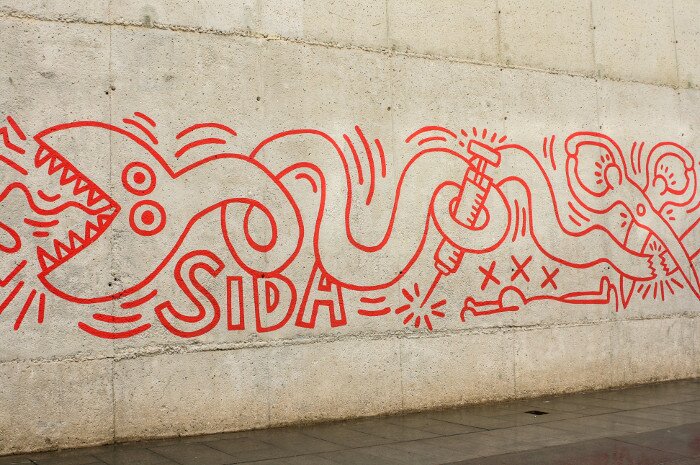
The last port of call in this guide is dedicated to two corners of the city in which a couple of well-known artists have erected their work. The first is the famous mural by Keith Haring – an American artist and social activist diagnosed with AIDS, which he later died from – entitled ‘Together We Can Stop AIDS. The original mural was painted in a poverty-stricken, seedy area in Raval known as the Barrio Chino, but it has now been restored to an outside wall of the MACBA (Barcelona Museum of Contemporary Art). The mural depicts a syringe around which a large snake has coiled itself. The snake has the name: AIDS. A couple in the shape of a pair of scissors cut up the reptile and another figure places a condom on its tail. It is painted in one colour, red, the colour of blood. The second piece of art is found on Barcelona’s most famous street, Las Ramblas. When you least expect it, close to the Boquería market, you will find that you are standing on a beautiful piece by Spanish painter Miró, which was inspired by the cosmos.
Categories:









